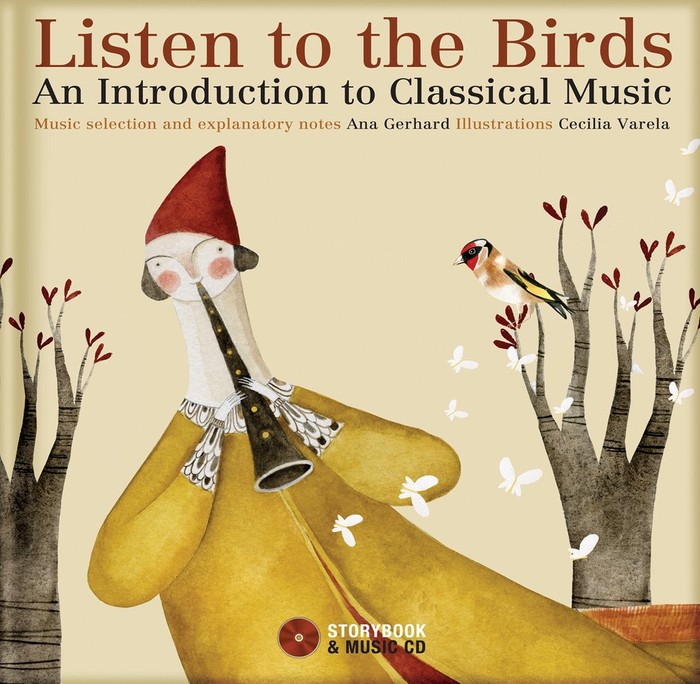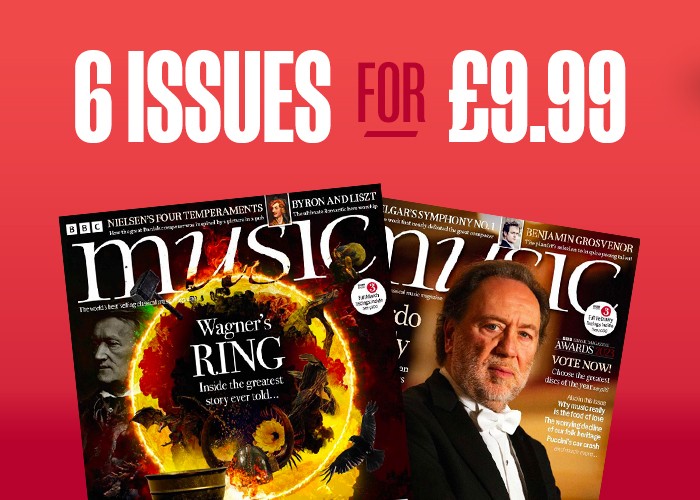Children's books about music: 10 of the best
Our guide to the best books about music written for children of all ages

For parents hoping to introduce children to classical music, books can be a great place to start. But which ones will children actually enjoy reading? Here is our guide to ten of the best children's books about music.
Best children's books about music
The Story Orchestra: In the Hall of the Mountain King

Illustrator Jessica Courtney-Tickle and the writer/musician Katy Flint are onto a winner with their handsome series of push-button books, combining storytelling with excerpts of classical music. Previous editions have included The Nutcracker, Swan Lake, The Four Seasons in One Day, Sleeping Beauty and The Carnival of the Animals - all of them lovingly put together and charmingly illustrated.
This latest one interweaves fragments of music by Edvard Grieg with the story of a young boy who sets off on an adventure through the valleys and mountains of the Norwegian countryside, beginning with a wedding feast and ending in the lair of the Mountain King. Just touch the button on each page to hear the music, then flip to the back page to get a child-friendly musical analysis, as well as a little glossary of musical terms and a mini-biography of the composer.
Listen to the Birds: An Introduction to Classical Music

In this elegantly-illustrated book by Ana Gerhard and illustrator Cecilia Varela we learn about some of the pieces of classical music inspired by birds, with descriptions of twenty different works by Tchaikovsky, Vivaldi and Saint-Saëns amongst others.
Also included is a CD of the musical works along with a listening guide with things to look out for, a glossary of musical terms and mini-biographies of bird-loving composers. Plus, if you like this book, you'll be happy to know there's a sequel, Little Creatures, in which Gerhard pairs five centuries of music history with illustrations of insects, arachnids, wasps, butterflies, frogs and other creatures.
Bantam of the Opera

This bonkers book by the American writer Mary Jane Auch was one of the first I ever read to my son. We've since read it about 500 more times, so it's a testament to Auch - a self-confessed poultry fan - that it still hasn't gotten boring.
It tells the story of Luigi, a cockerel gifted with a glorious voice, who finds fame as the star of the Cosmopolitan Opera Company in a production of Verdi's Rigoletto, after the lead tenor and understudy are laid low with chicken pox.
Charming, witty and tremendous fun to read, especially if you do the voices, it's a great way to introduce children to the concept of opera. But be warned: once you've finished it, Rigoletto may forever be synonymous with images of chickens singing 'cock a la doo da lay' and swinging from chandeliers.
Strange Mr Satie
As someone guided by his own rules for how music should be, for behaviour in school, for romance and how to dress, the 19th century composer Erik Satie was at odds even with the French avant-garde community of his day.
So the author M.T. Anderson and illustrator Petra Mathers are onto an interesting subject with this little book, which introduces young readers to the man who 'never grew up but was always a child with an old man's smile'.
The writers have made some bold choices: we hear about how Satie befriended and fell in love with an artist and model who already had a boyfriend; how he tagged along with them to social events; how, in a fit of jealous rage, he once pushed his lover out of the window.
More like this
But Anderson and Mathers handle it all with an eloquence and fantastical style that will allow small children to get caught up in the story of this one-off composer, who moved in a world of poets, painters, magicians and puppeteers.
Why Beethoven threw the Strew

The British cellist Steven Isserlis brings the world of classical music to life in this book, which introduces children to six of his favourite composers: Bach, Mozart, Beethoven, Schumann, Brahms and Stravinsky. Through a series of entertaining anecdotes, Isserlis does an excellent job of demystifying each composer, turning him into human beings made of flesh and blood. Each chapter includes a glossary of musical terms as well as suggestions on where to start exploring each composer's output.
The Bear and the Piano

When a bear cub stumbles upon a discarded piano in the middle of a forest one day, he decides to teach himself how to play it. One day a father and son are walking in the forest when they hear the bear playing. It's the start of a journey to stardom for the bear, who enjoys performing to sold-out venues, but eventually starts to miss his friends and family in the forest. David Litchfield's first book for ages 4+ is beautifully illustrated and sensitively told.
Ada's Violin

The true story of how a village turned garbage into music, Ada's Violin follows the poverty-stricken children in Cateura, Paraguay, who created an orchestra of instruments out of junk and learnt to play them - eventually finding fame and even playing with Metallica.
Susan Hood and Sally Wern Comport's book offers us a window into a town that struggles to purchase shelter, food, as well as schooling and care for children, where families work long hours looking through trash bags in the landfill for items to recycle. Anyone wishing to know more can go to recycledorchestracateura.com to check out photos and videos of the orchestra, including an interview with the eponymous Ada.
I Know a Shy Fellow who Swallowed a Cello

This clever variation on 'There was an Old Woman who Swallowed a Fly' makes a nifty little introduction to the instruments of the orchestra.
Barbara S. Garriel's text bounces along with a lovely musicality of its own, always keeping the rhymes fresh and and to-the-point ('I know a shy fellow who swallowed a sax. Hard to relax when you swallow a sax.'). John O'Brien's illustrations are gloriously silly. And you'll be glad to hear that the book ends much more happily than the rhyme that inspired it, with the final musician simply sneezing his instrument out.
Itzhak: A Boy who Loved the Violin

This picture book follows the life story of the violinist Itzhak Perlman, from his early years in Israel when his received his first toy violin, to performing on the Ed Sullivan Show in the US aged 13. In between we hear about his life-altering illness: polio, which he contracted when he was four years old and which left him with a permanent disability, forcing him to depend on crutches and to play the violin sitting down.
Author Tracy Newman and illustrator Abigail Halpin do a remarkable job of conveying Perlman's determination to pursue his artistic passion. Their book, which also includes an introduction to musical terms such as legato, spiccato and vibrato, manages to be at once informative and age-appropriate. It's a super introduction to one of the world's greatest musical performers.
Mole Music

People get emotional about this book. One anonymous GoodReads reviewer laments being introduced to it in his toddler years, 'because everything I have read since pales in comparison.'
Strong words, perhaps, but David McPhail's Mole Music, first published in 1999, is indeed touching. It tells the story of a mole who practises the violin for years in his underground house, dreaming that other people, possibly even presidents and queens, might one day hear his music and be changed by it. Little does he know that, up above his burrow, all his dreams are coming true.
Authors
Hannah Nepilova is a regular contributor to BBC Music Magazine. She has also written for The Financial Times, The Times, The Strad, Gramophone, Opera Now, Opera, the BBC Proms and the Philharmonia, and runs The Cusp, an online magazine exploring the boundaries between art forms. Born to Czech parents, she has a strong interest in Czech music and culture.





